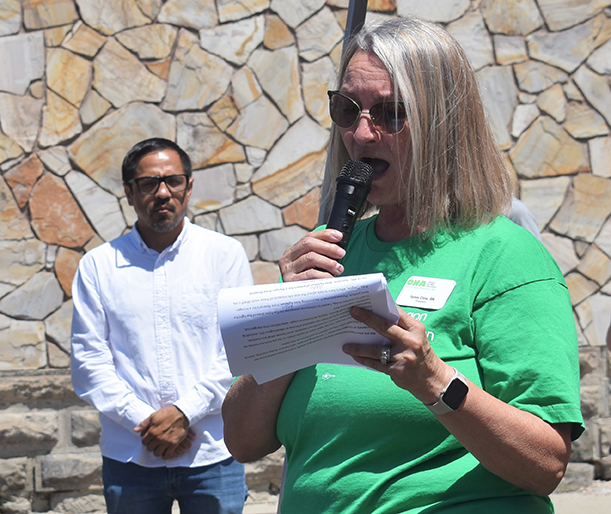Silly shutdowns, and making highways safer
Published 10:45 am Friday, January 4, 2019
The federal government hummed along for the past year despite having run up a $21.6 trillion tab over the decades, yet suddenly, on Dec. 22, it could no longer pay people to pass out pamphlets or refill toilet paper holders at national parks.
Except eventually the feds will start sending out checks again. And most likely some of those will pay people for the time they weren’t handing out pamphlets or replacing toilet paper at national parks.
This is roughly akin to a parent giving a child an allowance for not cleaning his room.
And the parent can’t get into the room while it’s not being cleaned, because the door is locked.
This is nonsensical, to be sure.
But then you probably didn’t expect anything else from Washington, D.C.
The current partial shutdown of the federal government is the latest in a series of several such episodes dating to the mid-1990s, each similarly inane.
The notion that the feds can’t afford to operate national parks and Forest Service offices, among many other “non-essential” services affected by the shutdown, is palpably silly.
In theory any organization that’s $21.6 trillion in hock — an amount so immense as to be all but inconceivable — ought not be able to afford much of anything.
Yet until Dec. 22 that unfortunate fiscal situation didn’t impinge on the federal government’s profligacy.
But it’s not cash (or credit) that the feds lack in this case.
It’s votes in Congress.
This shutdown, like its predecessors, is a political fiasco rather than a fiscal one.
The dispute in this case centers on President Donald Trump’s request for $5 billion to build a security wall along part of the U.S. border with Mexico.
Congressional Democrats would no more hand Trump a potential PR victory, of course, than they would spit on a constituent during a town hall meeting.
The dollar figure is irrelevant — $5 billion is a massive amount by my standards (and most likely by yours), but as a portion of the federal budget it’s not much more than the proverbial rounding error.
(Or change plumbed from beneath the couch cushions, if you prefer, as I do, that more earthy metaphor.)
I didn’t intend to visit any national parks, so the shutdown had little practical effect on me.
Although, to cite a closer example, I imagine some local residents during the holidays might have enjoyed taking visiting relatives or friends on a tour through the always-entertaining Oregon Trail Interpretive Center.
But the BLM-operated Center was closed, a casualty of the shutdown.
I understand that the threat of shutting down parts of the federal government gives lawmakers, and the president, potential leverage in negotiating matters such as the border wall (or fence, or enhanced security measures, or whatever other euphemism is in vogue).
But even lawmakers aren’t so dismissive of voters that they are claiming the problem with Trump’s request is that we can’t afford it.
Any smidgen of credibility such an argument might have will disappear if Congress, as it has after other shutdowns, approves retroactive pay for the federal workers who were told to stay home.
I sympathize with those employees. They’re not responsible for the shutdown.
But in the end the people most likely to be affected by these shutdowns, who are deprived of some service their tax dollars are supposed to pay for, are those of us whose paychecks don’t come from the (overdrawn) federal coffers.
Government shutdowns are little more than a putrid concoction of political buffoonery and accounting tricks.
And most of us, I’d wager, disdain the former, and don’t much care for the latter either.
Unless the accounting trick gives us a nice little (and legal) boost on our 1040 form.
0 0 0
State Sen. Peter Courtney, president of the Oregon Senate, thinks Oregon should join Utah in lowering the threshold for what constitutes driving under the influence of intoxicants to a blood alcohol concentration (BAC) of .05.
Oregon’s current threshold, in common with other states except Utah, is .08. Utah’s lower standard took effect Dec. 30, 2018.
There is precedent for Oregon to follow Utah’s lead on this issue. They were the first two states, in 1983, to lower the legal BAC limit from .10 to .08.
I support Courtney’s proposal, but not because I think it offers a miraculous solution to the deadly scourge of drunken driving.
I don’t expect miracles. But I think improvement is feasible.
And it seems to me reasonable to believe that reducing the legal standard would persuade some people to decide not to drive after drinking alcohol.
This would be a good thing.
That it would save lives is about as certain as something can be, based on research into how alcohol affects drivers’ abilities, and on data about fatal traffic crashes.
How many lives is impossible to say.
But I happen to think that when it comes to deaths from a wholly preventable cause — which impaired driving clearly is — the number of lives saved ought not be part of the equation in weighing whether a proposed law is worthwhile.
Courtney’s proposal isn’t especially dramatic.
It would, after all, potentially affect a narrow range of drivers — those with a BAC of .05, .06 or .07.
The National Highway Traffic Safety Administration doesn’t track fatal crashes involving drivers within that range, but its statistics do distinguish between drivers with a BAC of .08 or above, and those with a BAC of .01 to .07.
People are far more likely to be killed in a crash involving a driver with a BAC of .08 or higher, as would be expected — 10,497 of the 37,461 deaths nationwide in all types of crashes in 2016, including ones that didn’t involve alcohol, according to federal data.
(The figures aren’t separated by state.)
Deaths in crashes involving a driver with a BAC of .01 to .07 totaled 2,017 in 2016.
Research cited by the National Transportation Safety Board — which recommends all states adopt the .05 threshold — shows that the risk of a fatal crash increases substantially if a driver reaches, or exceeds, that BAC. The risk of dying in a single-vehicle crash is at least seven times higher for drivers with a BAC of between .05 and .079, compared with drivers with no alcohol in their system, according to the research.
The Transportation Safety Board, in making its recommendation, also cited studies showing that most adults with a BAC of .05 are “significantly impaired” as to their driving abilities.
The bottom line is that although .08 is the current legal threshold in Oregon, fatal crash records and studies on driver impairment show that it is hardly an effective way to delineate “safe” driving.
Lowering the limit would make our roads marginally safer. But when lives are at stake, the tiniest statistical gain benefit is beyond measuring for the people spared.
Jayson Jacoby is editor of the Baker City Herald.









